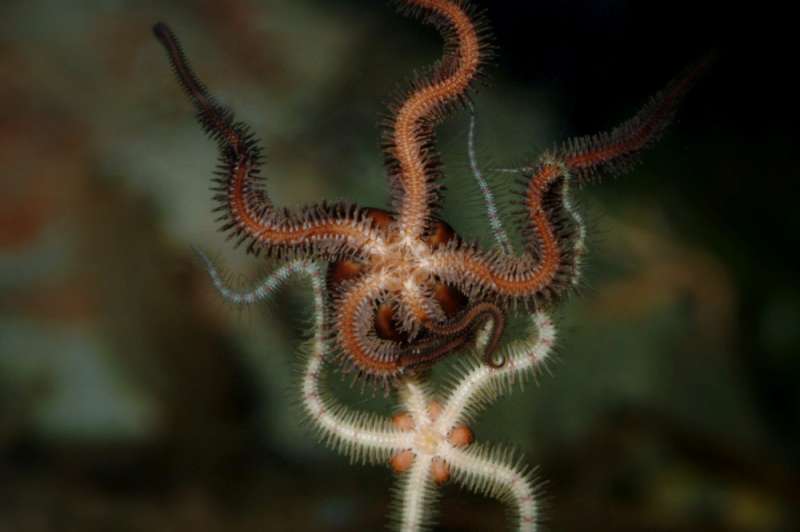Credit: Kelvin Boot
As coastal marine environments become starved of oxygen, the response of one key species could have further consequences for an entire ecosystem.
Brittlestars are an important member of the benthos, and many make their home down in the mud of the seabed. The stars are known as ecosystem engineers, contributing to bioturbation with movements that play a huge role in shaping the environment, shifting nutrients and chemicals, and making resources available to other benthic life.
A reduced level of dissolved oxygen (DO) is known as hypoxia, and it is a problem increasingly affecting waters around the world. While the biological impacts of hypoxia on the brittlestar Amphiura filiformishave been well studied, highlighting outcomes such as reduced growth and delayed spawning, behavioural and ecosystem effects are not as well understood. PML researchers investigating non-lethal levels of hypoxia on the species have now shown how brittlestar population density is a vital consideration, and that a bustling benthos may respond differently to a smaller, less dense community.
"Brittlestar density plays a crucial role in exacerbating the effects of low oxygen," said lead author Dr. Ruth Calder-Potts. "This means that dense patches of A. filiformis may exhibit larger changes in behaviour and shifts in ecosystem function compared to sparse patches, as competition for oxygen and resources heighten."
These brittlestar changes include their bioturbation behaviour – subtle shifts that could lead to a range of ecological effects. An increase in the flow of ammonium brought about by changes in brittlestar bioturbation could in turn lead to a reduction in nitrification rates, an important step in the nitrogen cycle. Over time, this could mean a harmful build-up of nitrogen and leave coastal ecosystems and their brilliant biodiversity struggling to bounce back and recover after hypoxia takes hold.
More information: RN Calder-Potts et al, Density-dependent responses of the brittlestar Amphiura filiformis to moderate hypoxia and consequences for nutrient fluxes, Marine Ecology Progress Series (2018). DOI: 10.3354/meps12503
Journal information: Marine Ecology Progress Series
Provided by Plymouth Marine Laboratory






















